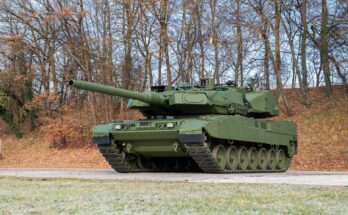by Bill Ostrove, International Military Markets Analyst, Forecast International.
Argentine Minister of Defense Julio Martinez has ruled out the purchase of supersonic fighter jets for the Argentine Air Force. The defense minister made his announcement on February 1 during an interview with Argentina’s Radio El Mundo.
Argentina has been searching for new supersonic fighter jets since it retired its Mirage IIIs in November 2015. The search has been wide-ranging, with Buenos Aires searching the world for both new and secondhand fighters.
Among the secondhand aircraft explored were Mirage F1s, Mirage 2000s, and Kfirs. Argentina even considered F-5s from the U.S. Navy that the U.S. had purchased secondhand from Switzerland, which would have made them a thirdhand purchase should a contract have been signed. More recently, Russian MiG-29s were considered as well. Among the new aircraft considered were Gripens, FA-50s, and M-346s. The FA-50s and M-346s are advanced trainers that can be used in a light attack role.
Martinez cited the high cost of the fighters as the reason for the termination. While a possible purchase cannot be completely dismissed given the wide-ranging and ever-changing nature of the search, it seems likely that the competition is officially over, especially at a time when the market-friendly government of President Mauricio Macri is attempting to rein in government spending.
While the move could be seen as a blow to Argentina’s prestige, it makes sense from a budget and operational perspective. Argentina’s primary threat comes from traffickers using small turboprop aircraft to transport drugs and other contraband. Supersonic fighter jets such as MiG-29s or Mirage 2000s are overkill when responding to those types of threats. Argentina’s current fleet of fighters and advanced trainers combined with advanced ground-based radar will provide enough capability to meet the threat.
Instead of purchasing new supersonic fighters, Argentina will invest in additional radar stations to detect aircraft encroaching on national airspace, especially in the northern part of the country where encroachments have become a serious problem.
In order to intercept the encroaching aircraft, Argentina will rely on its current fleet of advanced trainers and attack aircraft, such as IA-63 Pampas and IA-58 Pucaras. The Argentine Air Force currently has 68 of such aircraft in its inventory.
With the added room in the budget from the canceled purchase, Argentina will be able to shore up its efforts to upgrade the IA-63s and IA-58s, which have suffered from delays over the past few years. Buenos Aires will further shore up its air defenses following a decision by the U.S. Defense Security Cooperation Agency (DSCA) to export 24 T-6C+ Texans to Argentina.
Please feel free to use this content with Forecast International and analyst attributions, along with a link to the article. Contact Ray Peterson at +1 (203) 426-0800 or via email at ray.peterson@forecast1.com for additional analysis.
The Forecast International International Military Markets series examines the military capabilities, equipment requirements, and force structures inventories of 140 countries, with corresponding coverage of the political and economic trends shaping the defense market outlook for individual countries and regions.
For 50 years, Forecast International intelligence reports have been the aerospace and defense industry standard for accurate research, analysis, and projections. Our experienced analysts compile, evaluate, and present accurate data for decision makers. FI's market research reports offer concise analysis of individual programs and identify market opportunities. Each report includes a program overview, detailed statistics, recent developments and a competitive analysis, culminating in production forecasts spanning 10 or 15 years. Let our market intelligence reports be a key part of reducing uncertainties and mastering your specific market and its growth potential. Find out more at www.forecastinternational.com




